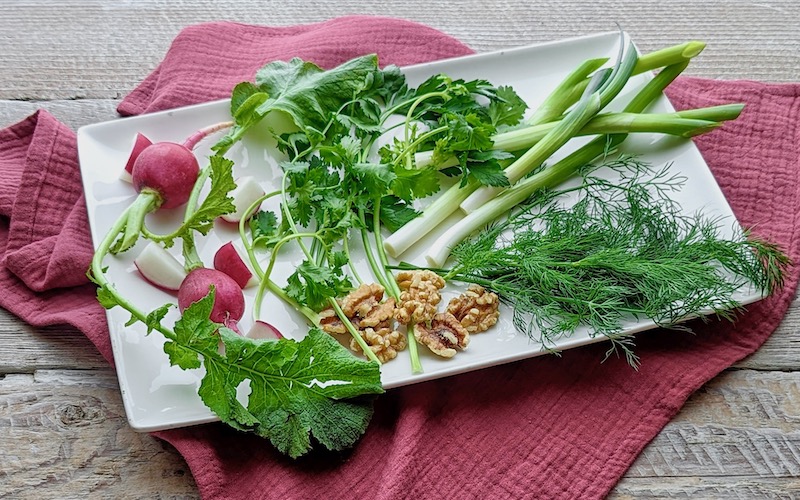

Persian food reminds me of Vietnamese with its love of fresh herb platters served at every meal. In Iran it’s any combination of mint, parsley, coriander, dill, tarragon, basil, chives, green onions and radishes; other wild or seasonal greens can be added, such as beetroot tops, watercress, chervil, savoury and dandelion. This herb platter can also be served as a starter and then often includes walnuts and olive oil-drizzled panir (a simple feta-like white cheese). And of course bread – there’s always bread. Sabzi means ‘greens’ or ‘herbs’ and khordan means ‘to eat’, so this platter is ‘herbs for eating’ (as opposed to herbs for cooking, I guess), so use the prettiest sprigs you can. If sabzi khordan is served as a starter, it remains on the table throughout the meal – some people even enjoy finishing their meal with it. Fresh walnuts are often served with sabzi khordan in Iran, so when using dried walnuts soak them in a bowl of cold water in the fridge overnight to plump them up and remove some of the astringency from the tannin in the dried skin.
Serves 2 as a side dish
Share page on:







